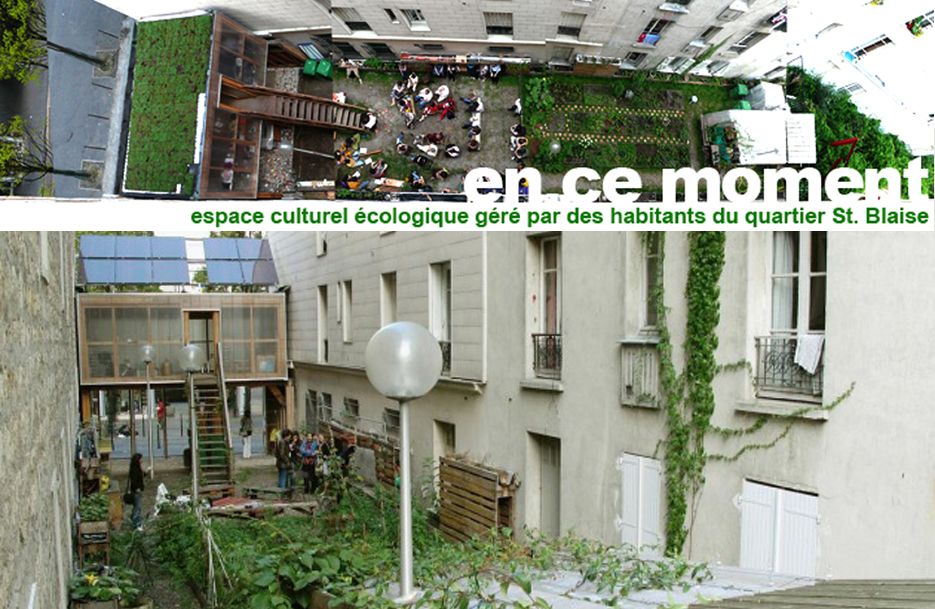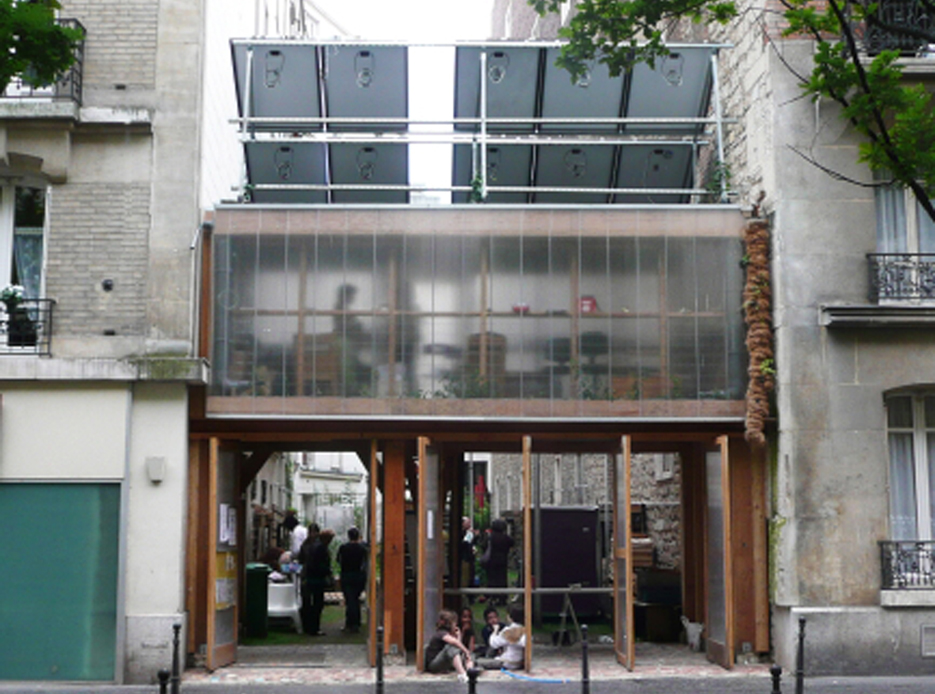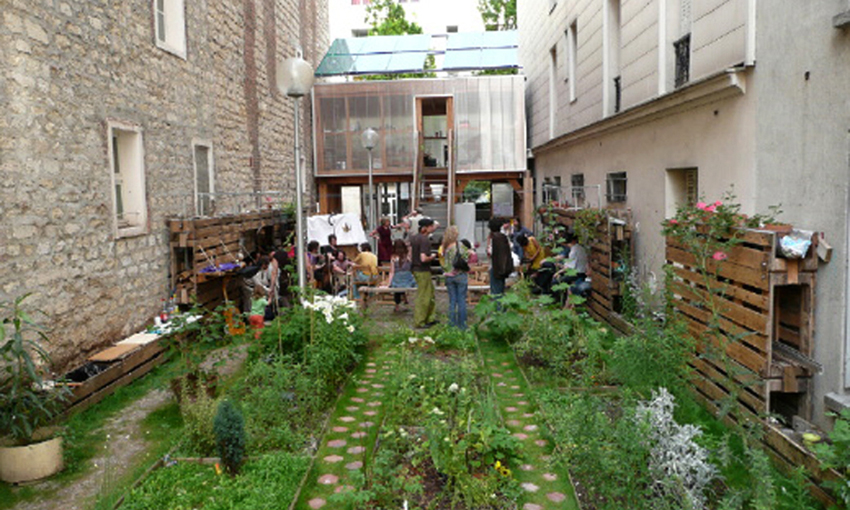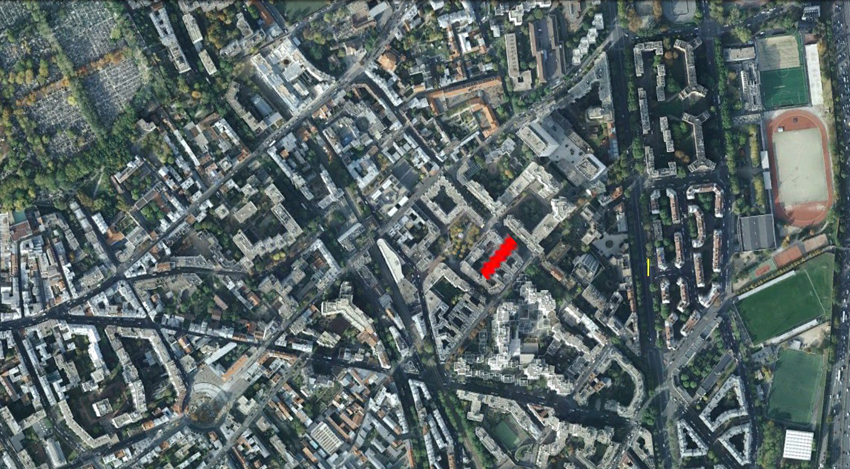‘Le 56′ is located on a formerly unused piece of land which had remained undeveloped due to outstanding conflicts between building developers and the municipality. In an attempt to resolve the issue, the commune of Paris invited Atelier d’Architecture Autogérée (AAA) to rethink the space. AAA is a collective platform that encourages the participation of inhabitants in the self-management of abandoned and under-used urban spaces.
Today the void is filled with productive plant beds, a mobile greenhouse and a shared collective space. An elevated building made from recycled materials, reinforces the street front while creating a permeable threshold that invites people in. Energy consumption is reduced by the use of solar panels, a green roof and a closed water cycle. Approximately forty people are involved in the project and new participants are encouraged to take part.
SOURCE: http://www.urbantactics.org/projects/passage%2056/passage56html.html
VISIT SITE: http://56stblaise.wordpress.com/
EDITOR’S NOTE: A carefully sited and designed elevated building made from recycled materials, reinforces the street front and neighborhood urban facade while at the same time making the center core of the block easily accessible by creating a permeable threshold that invites people into the garden.
STRENGTHS & OPPORTUNITIES: This inner urban block project takes advantage of under-used pre-existing residual city space. Proximity to a neighborhood and users facilitate the construction and management of the endeavor as well as the ability for it to encourage social cohesion. Physical openness encouraging greater accessibility coupled with neighborhood spatial reinforcement are well-defined strong urban design considerations. Attention to energy cycles articulated by the inclusion of a water recuperation system, green roof and solar panels further strengthen the project.
WEAKNESSES & THREATS: Productivity, although a appreciated output of the project, are certainly not paramount attributes. The small surface area and dedication to much of the space to public congregation, drastically limits the garden’s agronomic productivity. Socially popular gardens place great pressure on often fragile plant structures and growing system. Unless management is well considered, a dilution of tasks may threaten the health of the garden’s vegetation and cleanliness. Aesthetic considerations are often difficult to manage and sustain in organizations that are driven by a more publicly open process of decision-making occurring via the input of many diverse individuals.











